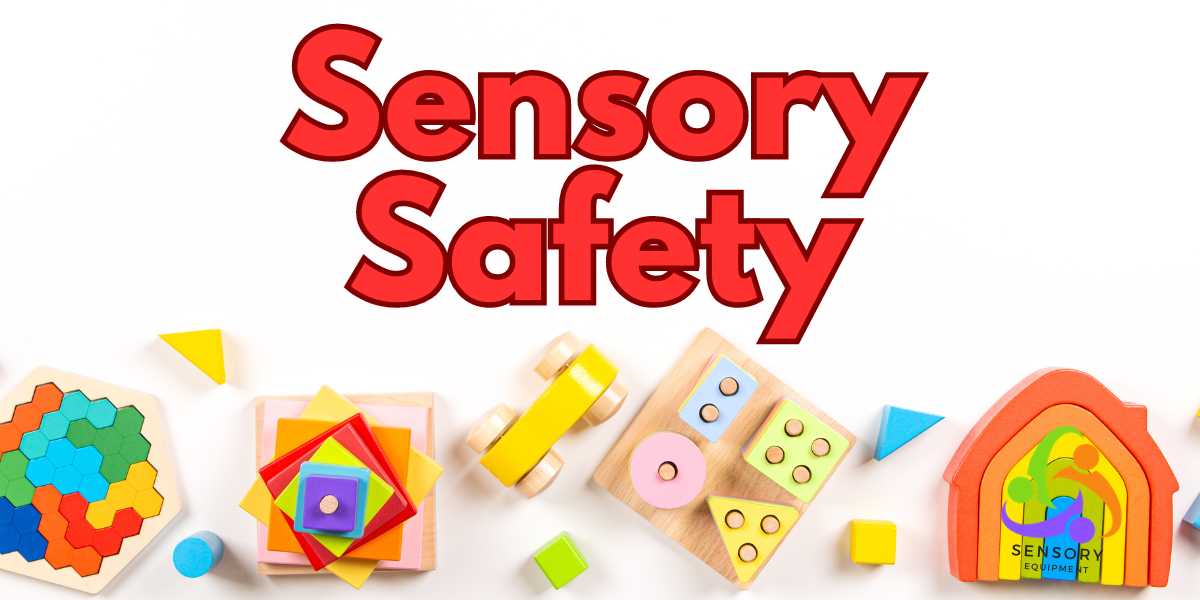Safety is paramount when using sensory equipment and toys, especially for younger children who are prone to putting objects in their mouths. Here are some key safety considerations to keep in mind:
Age-Appropriate Toys:
- Ensure that sensory toys and equipment are age-appropriate. Manufacturers typically provide age recommendations on the packaging, which should be followed closely. Young children should be given toys designed for their specific age group.
Non-Toxic Materials:
- Choose toys made from non-toxic materials. Avoid toys that may contain harmful substances, such as lead or phthalates. Look for products that have passed safety standards and certifications.
Small Parts:
- Be vigilant about small parts that could be choking hazards. Anything that can fit through a toilet paper tube is generally considered a choking hazard for young children. Avoid toys with small detachable parts.
Durability:
- Check the durability of sensory toys to ensure they don’t easily break or have parts that can become detached. Broken or damaged toys can present safety risks, as children may ingest or injure themselves with small, sharp, or pointed pieces.
Securely Attached Parts:
- Ensure that any parts or attachments on sensory toys are securely fastened. They should not come loose easily, as these can pose a choking hazard if swallowed.
Avoid Toxic Substances:
- Stay away from toys that may contain harmful substances like lead-based paint or other toxic materials. Make sure to buy from reputable manufacturers and suppliers.
Hygiene:
- Sensory toys can get dirty quickly, especially if children put them in their mouths. Regularly clean and sanitize sensory toys, following the manufacturer’s instructions. Some toys may be machine washable, while others can be wiped down with disinfectant.
Supervision:
- Always supervise young children while they are using sensory toys, especially if they tend to put objects in their mouths. This ensures that you can intervene if there are any safety concerns.
Size and Shape:
- Consider the size and shape of the sensory toys. Toys with sharp edges or points should be avoided, as they can pose injury risks. Toys with round edges and soft textures are safer choices.
Age-Appropriate Textures:
Select sensory toys with textures that are appropriate for the child’s developmental stage. Avoid overly rough or abrasive textures that could harm a child’s delicate skin.
Labels and Warnings:
Pay attention to labels and warnings provided by the manufacturer. They often provide important information about safety precautions and age-appropriateness.
Storage:
Store sensory toys in a safe and secure place when not in use, out of reach of young children. This prevents them from accessing the toys without supervision.
Regular Inspections:
Routinely inspect sensory toys for wear and tear. Discard or repair any damaged toys promptly to prevent accidents.
In summary, safety is a top priority when using sensory toys, especially for young children who may put objects in their mouths. By selecting age-appropriate, non-toxic, and well-constructed toys, regularly inspecting and cleaning them, and supervising children during play, you can create a safe and enjoyable sensory experience for children.





